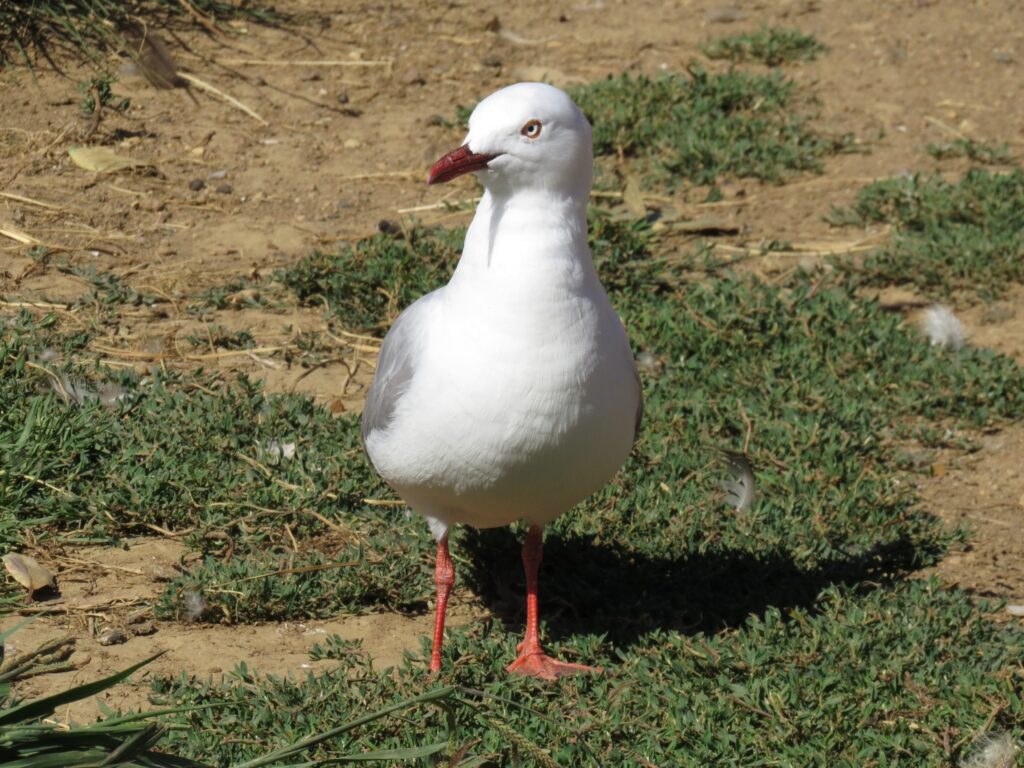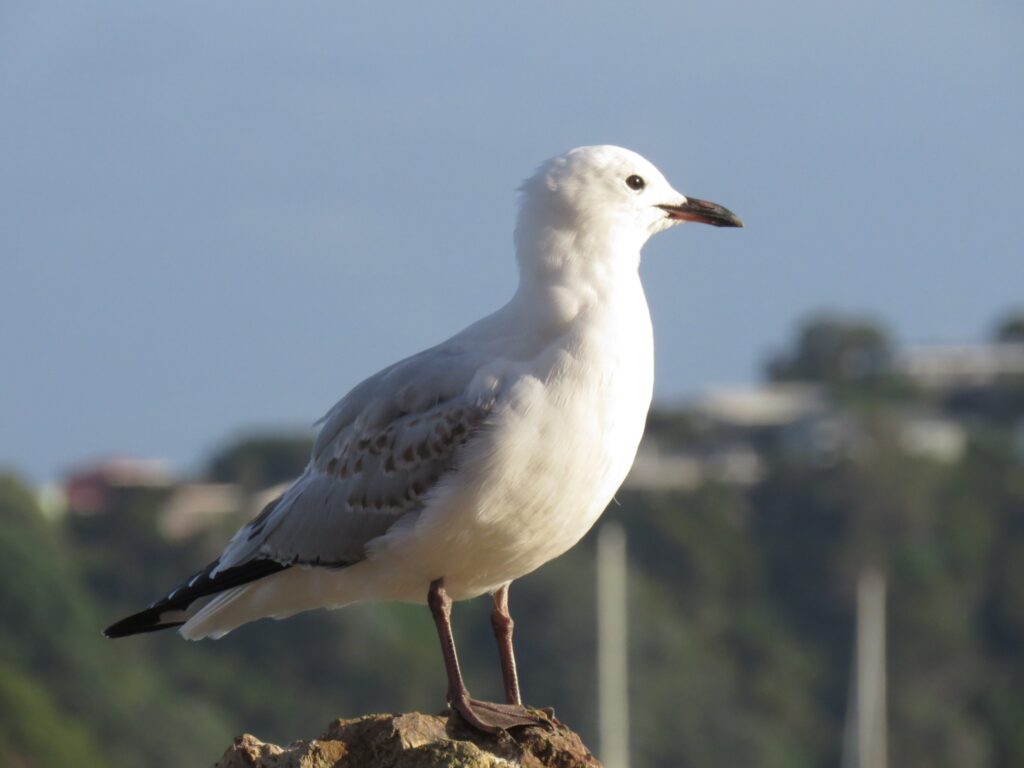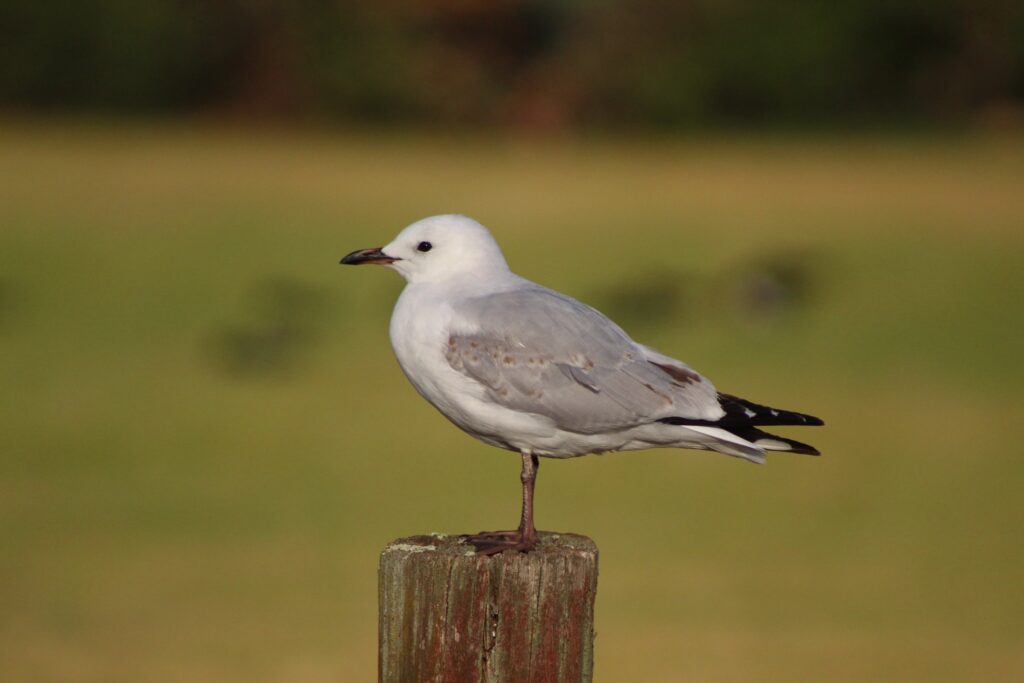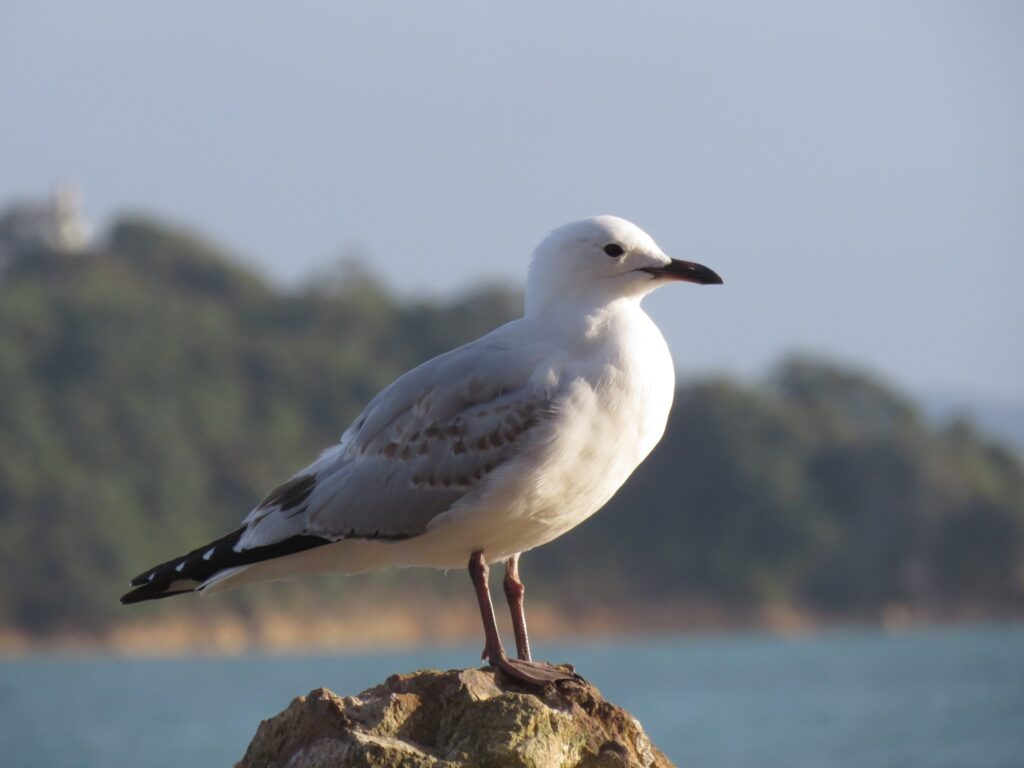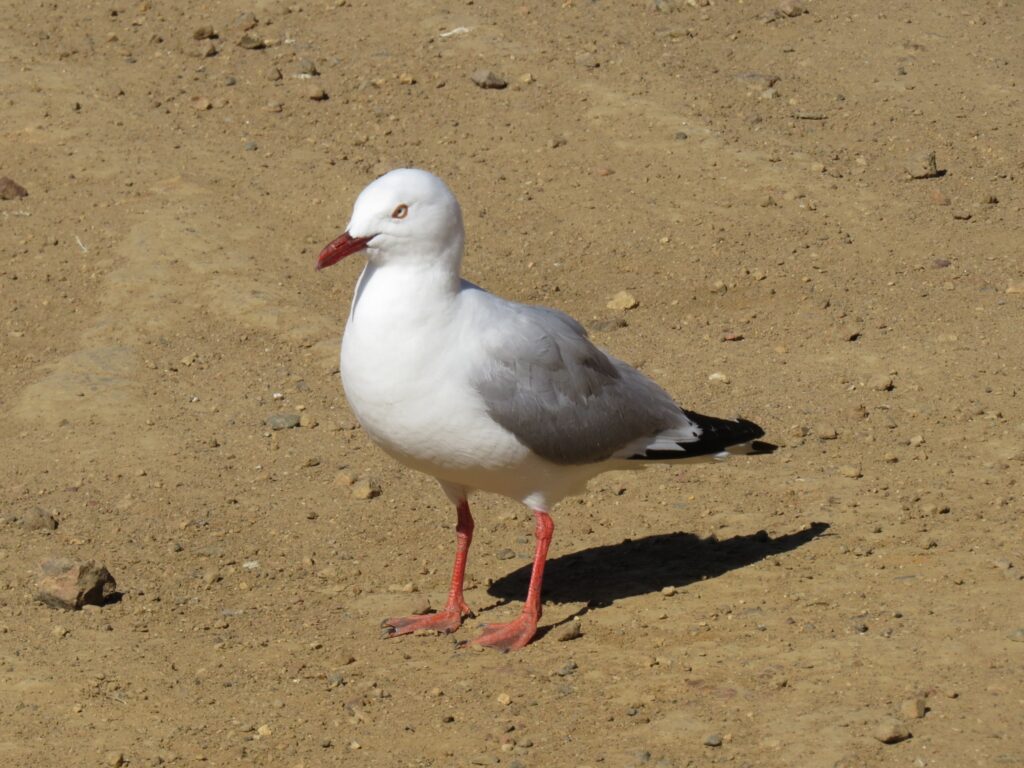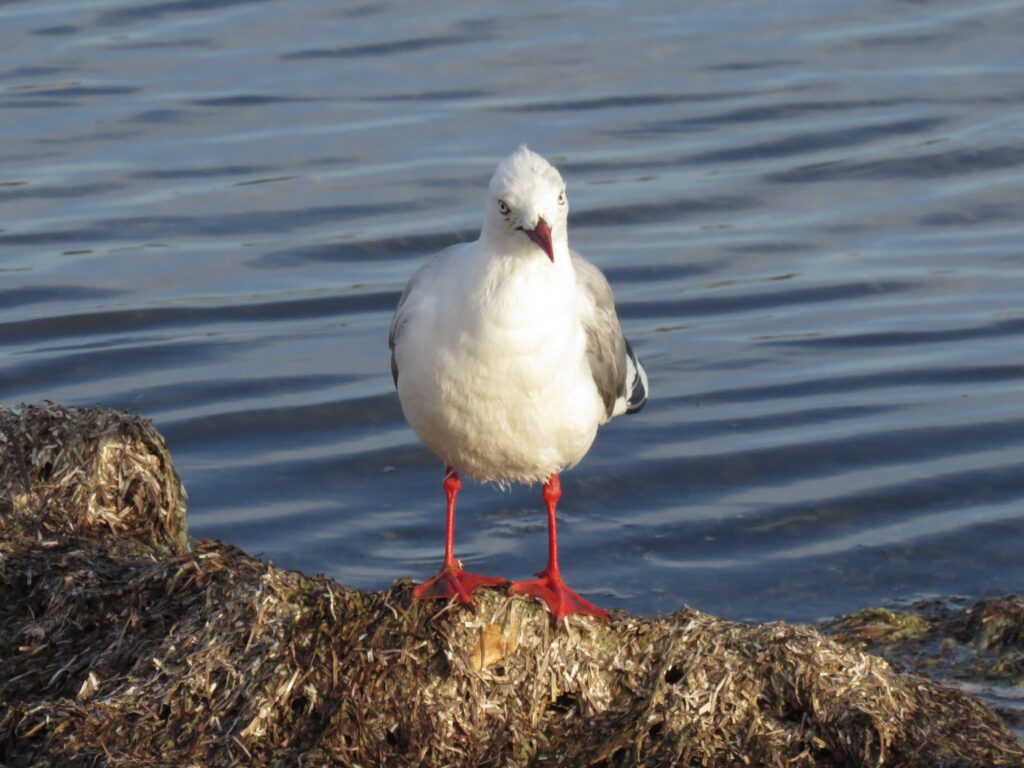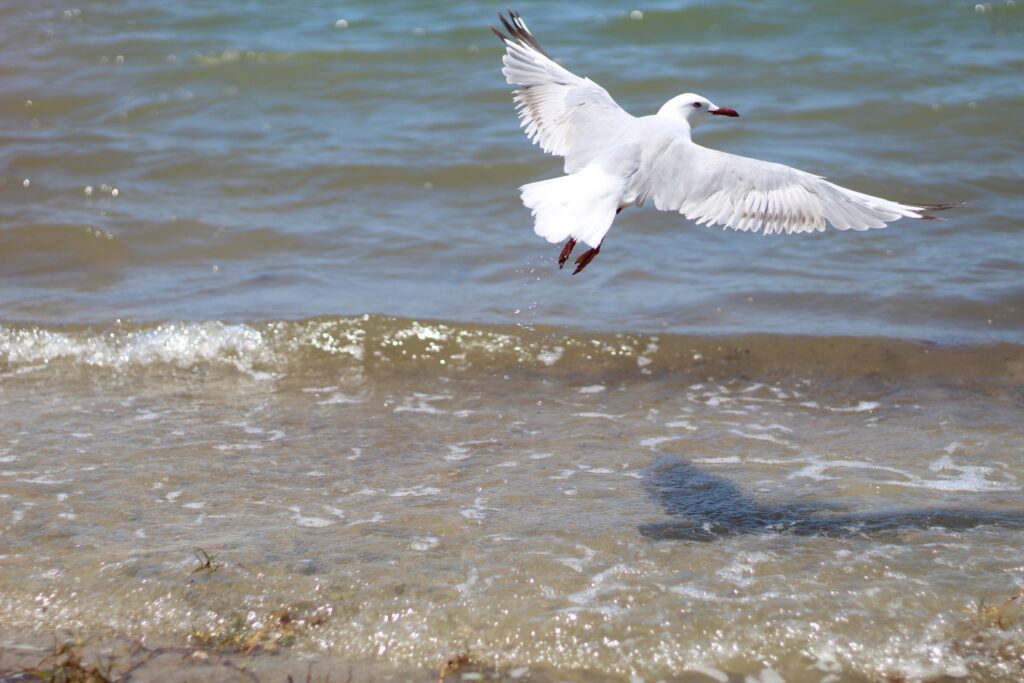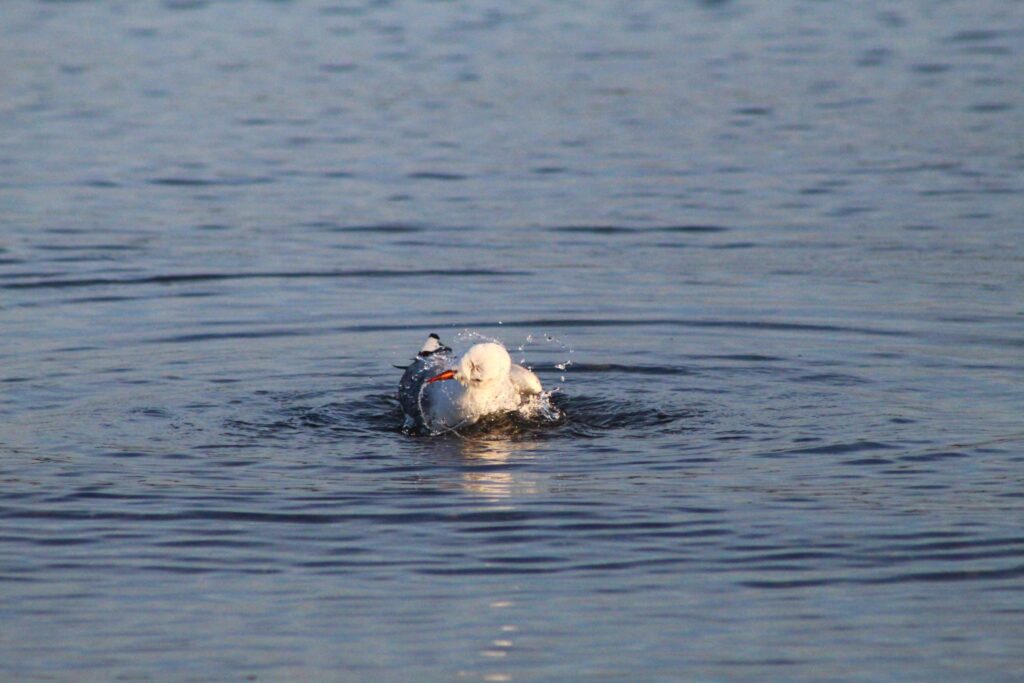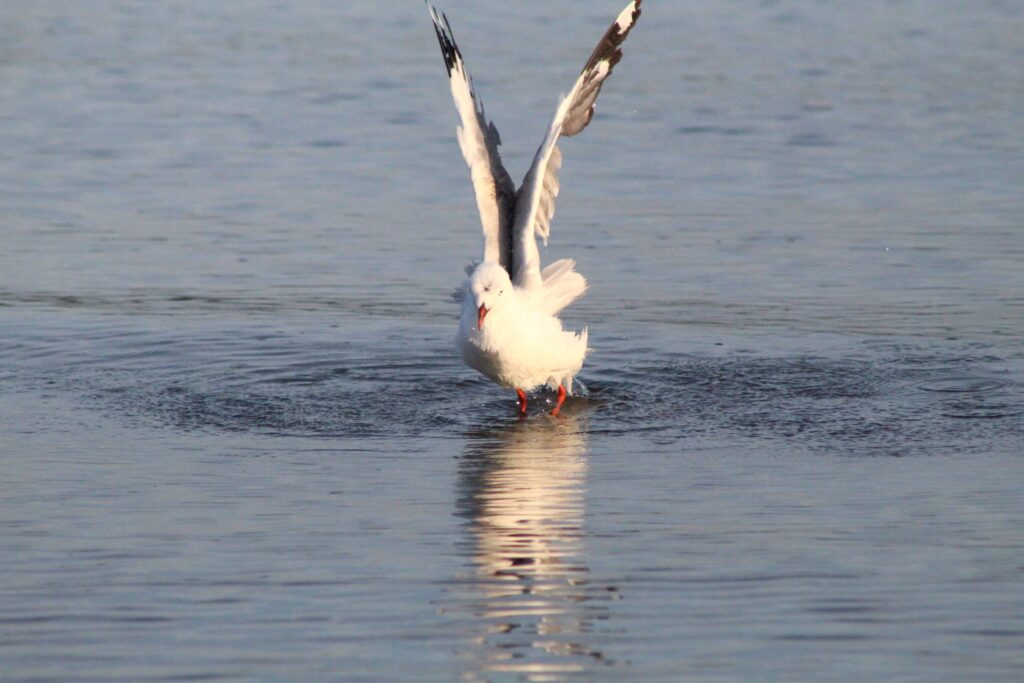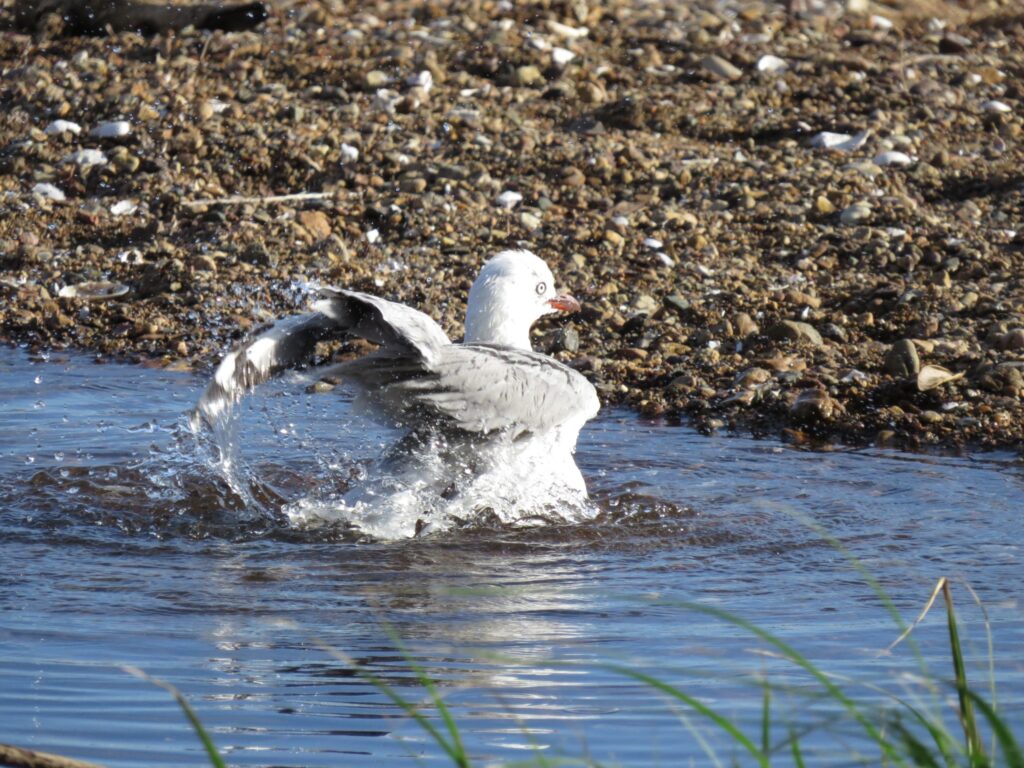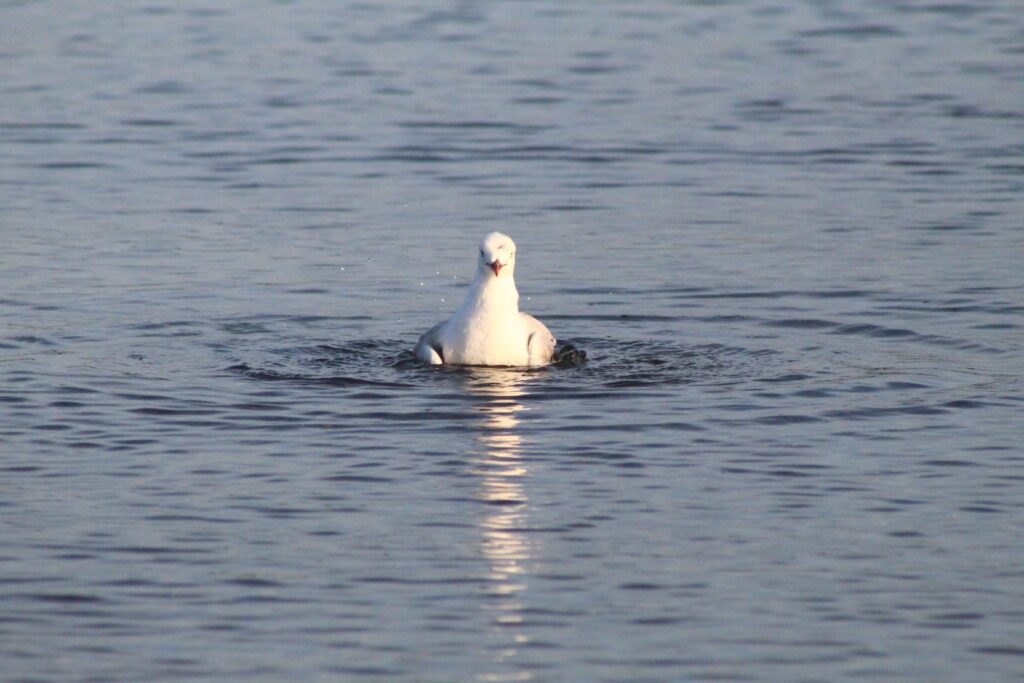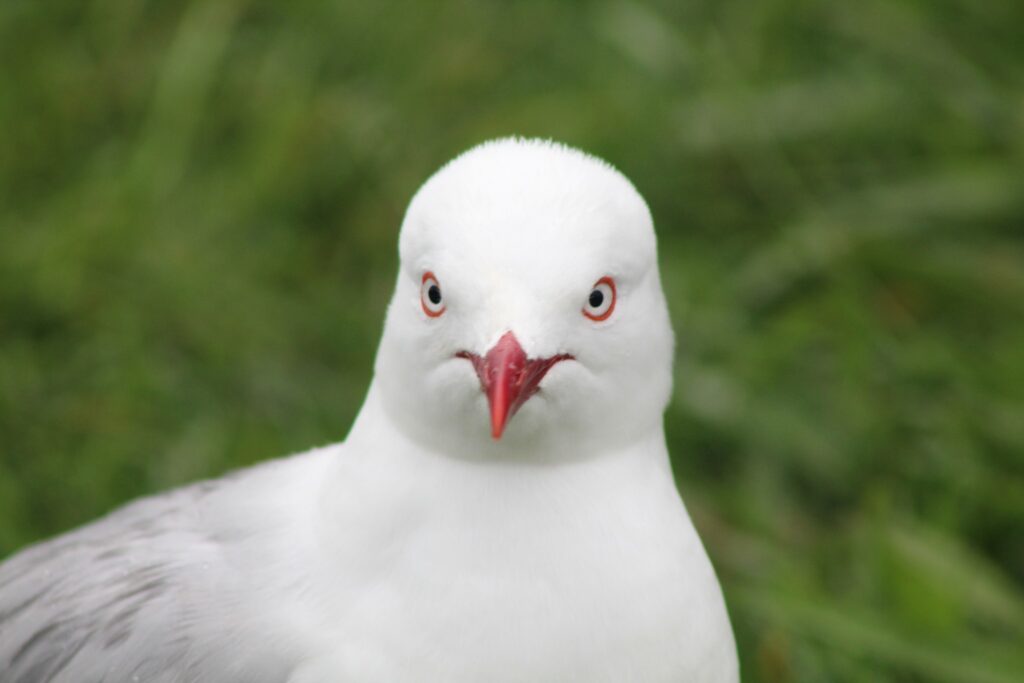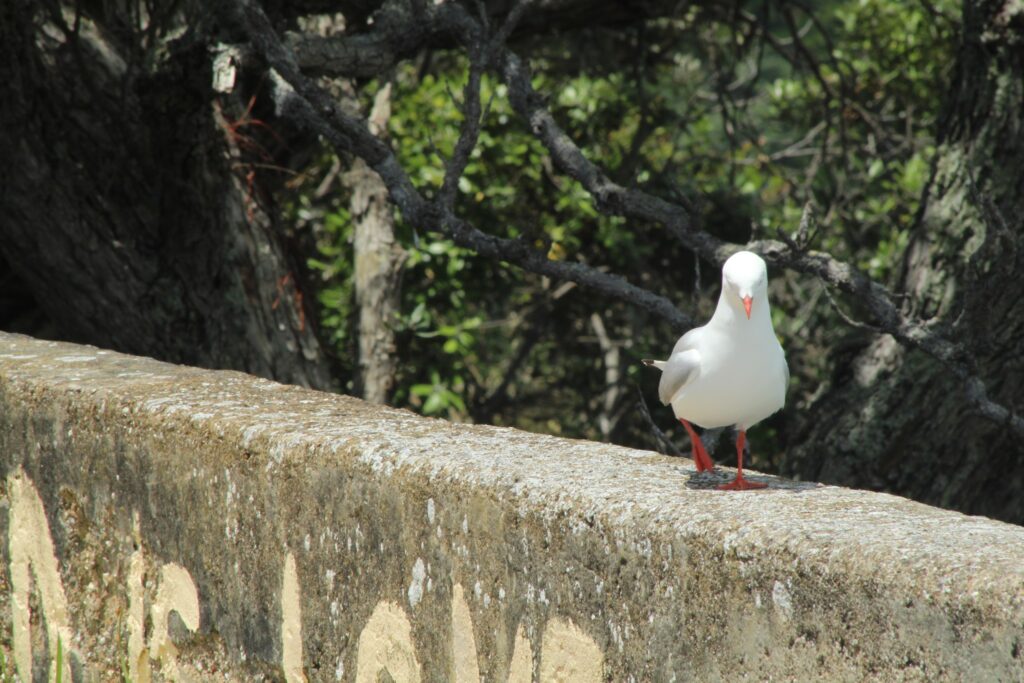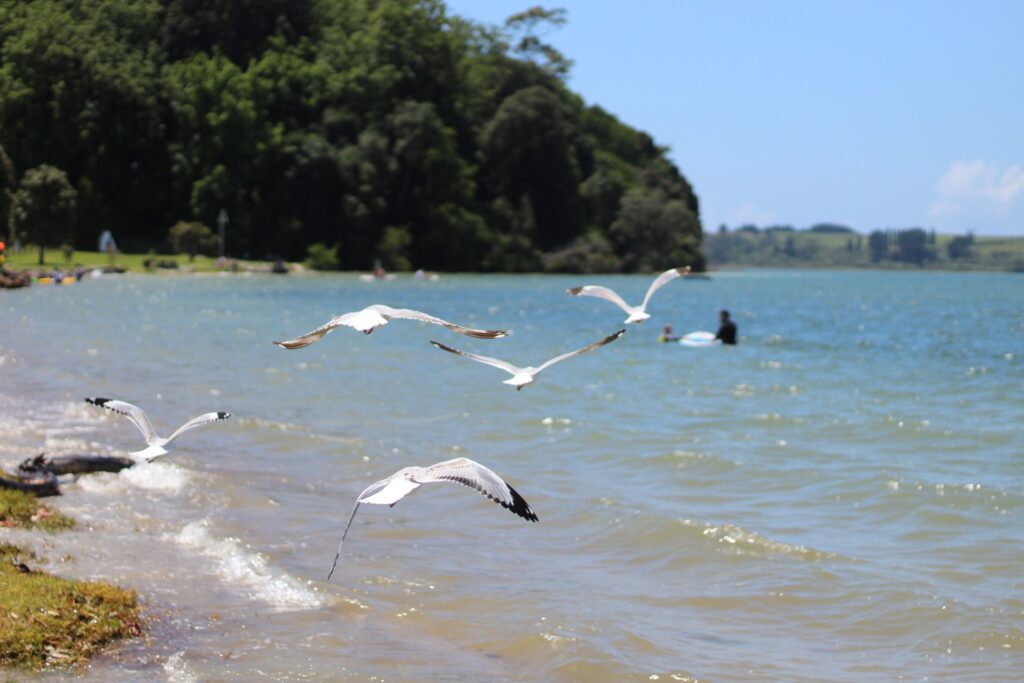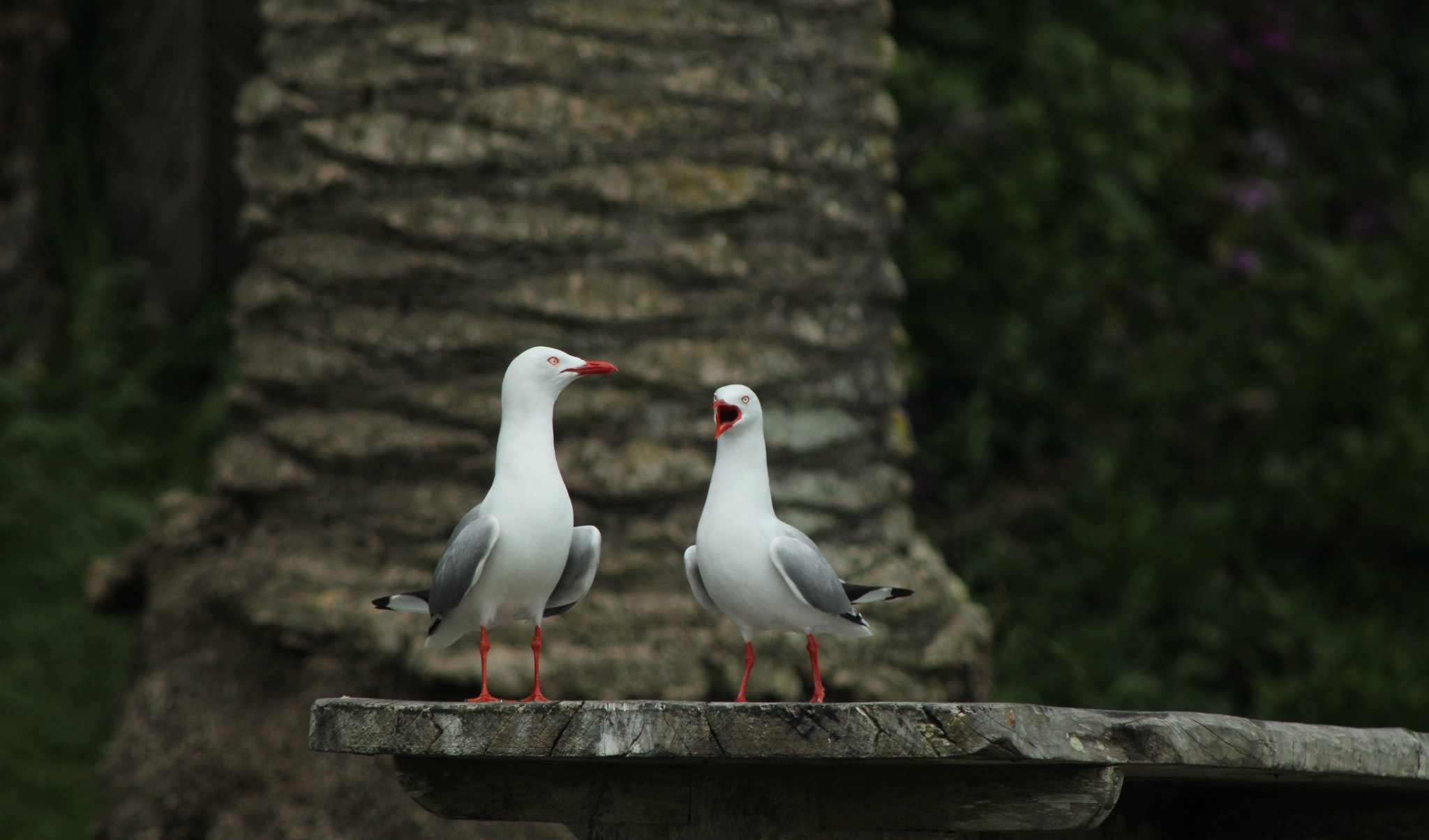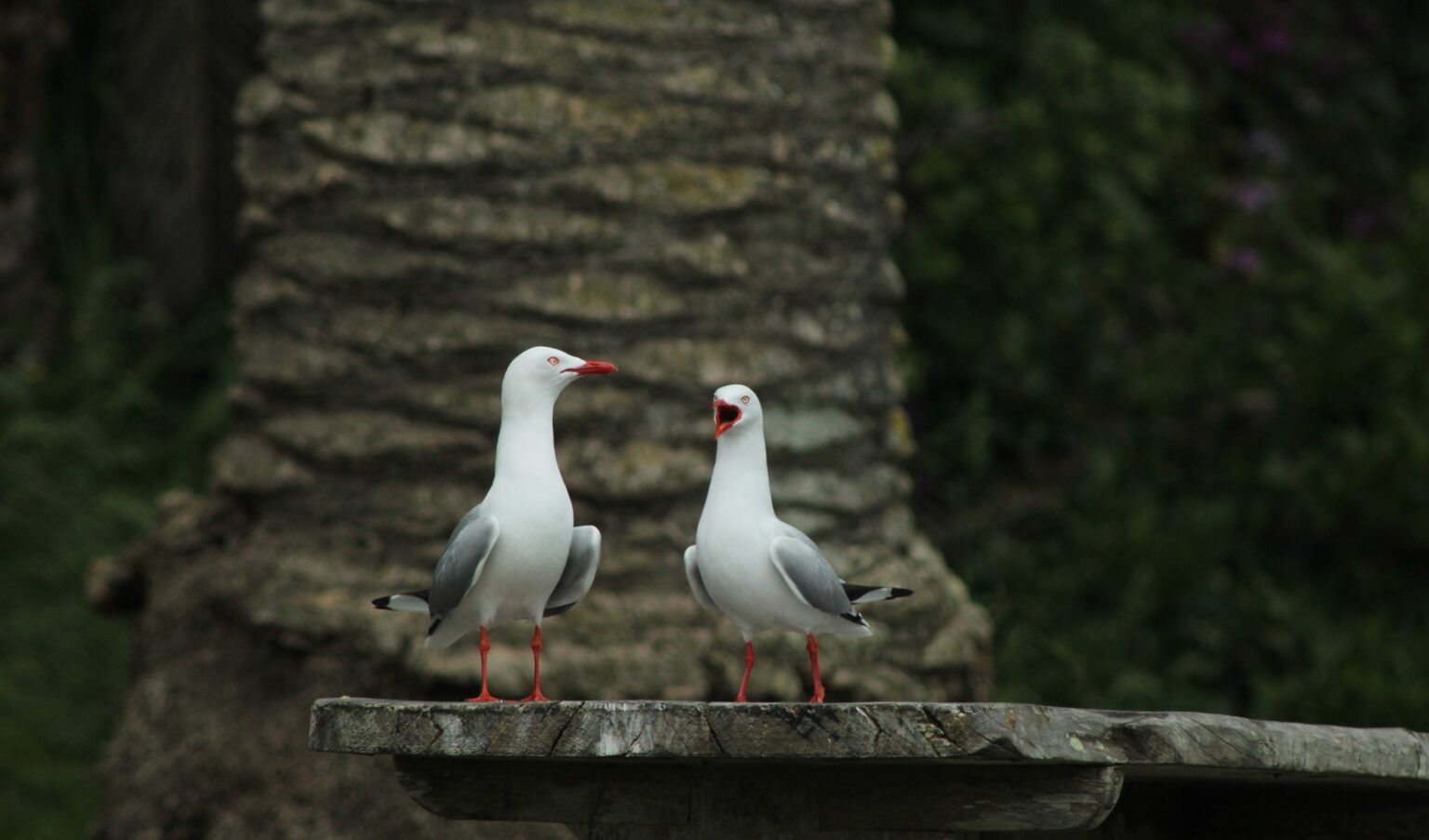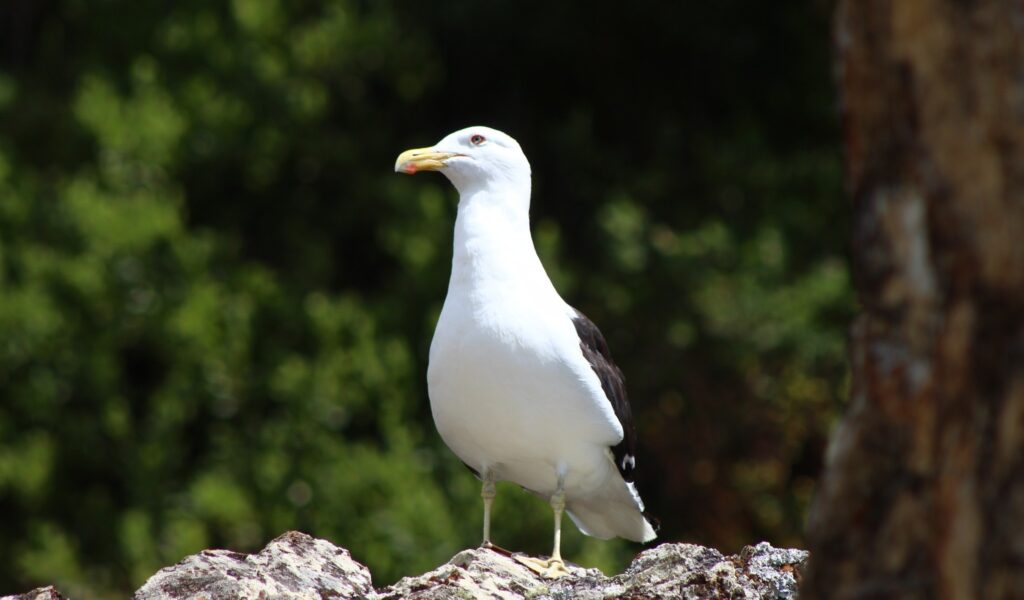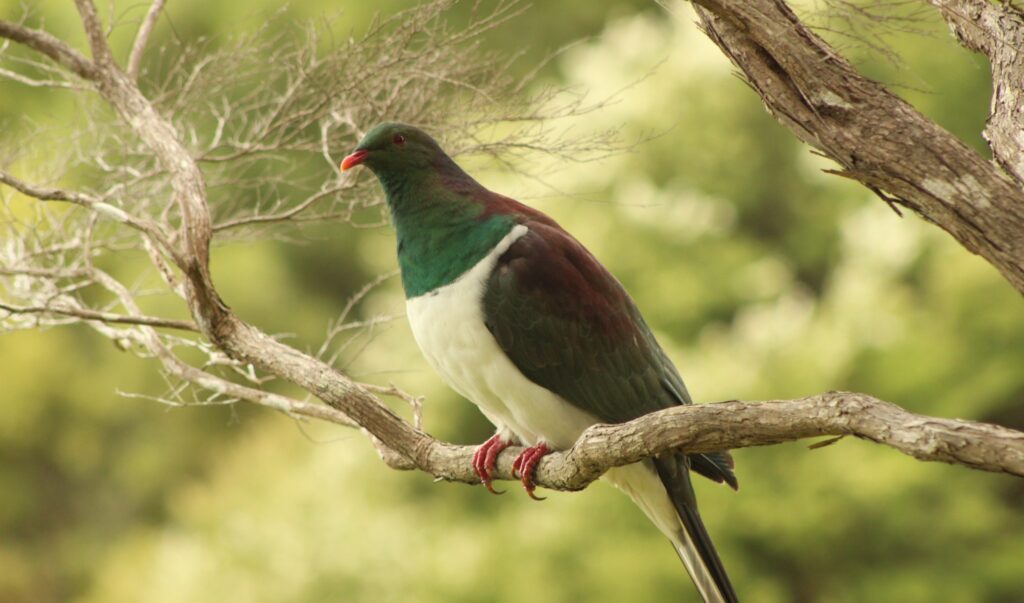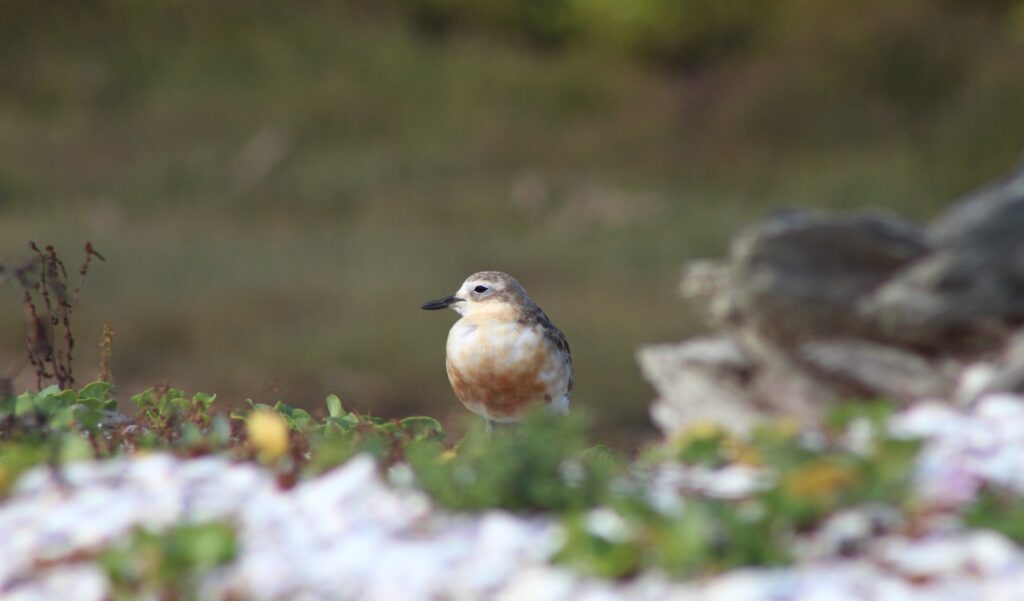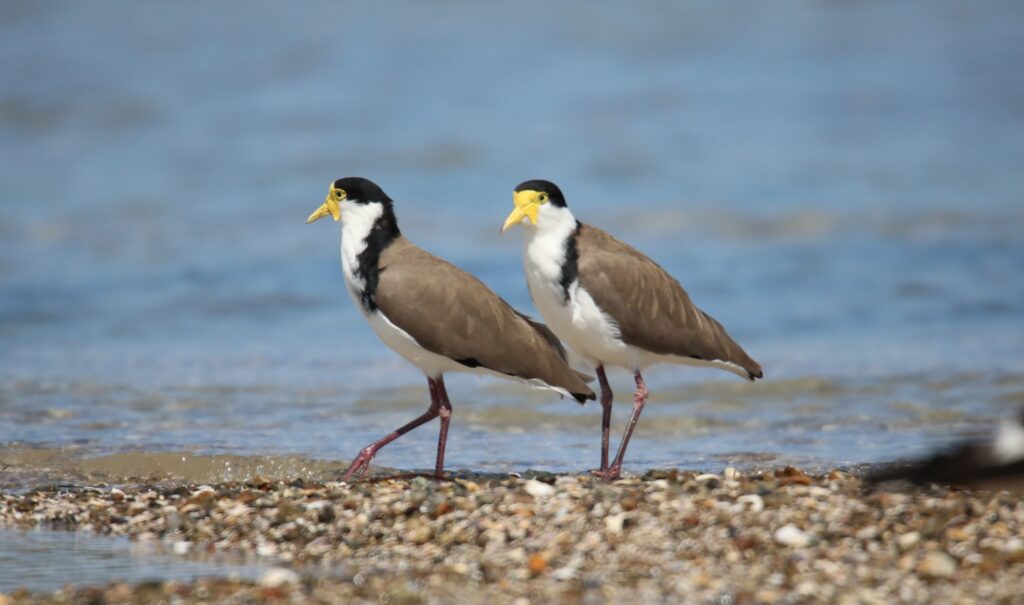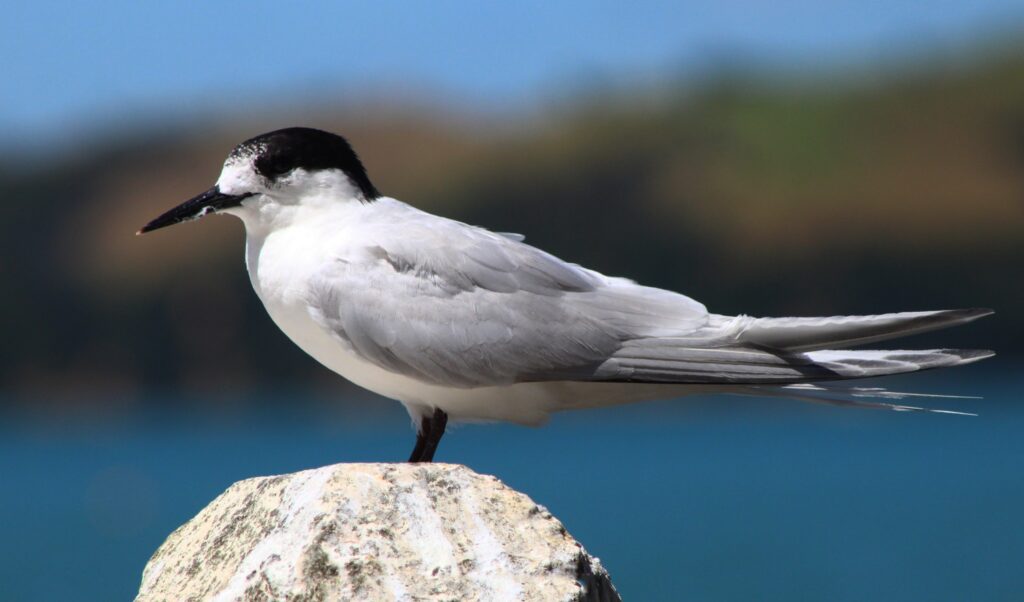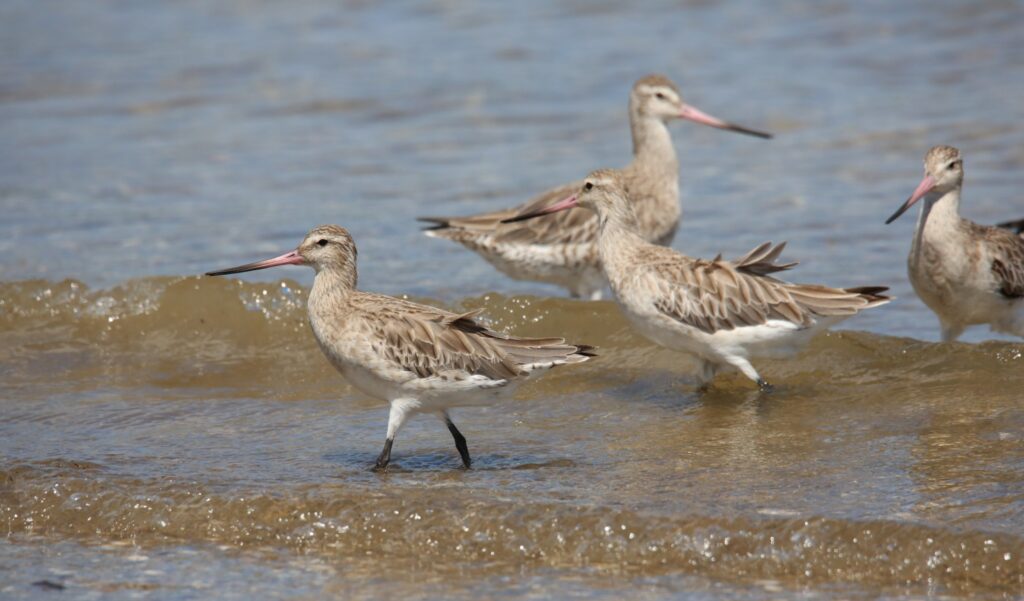Order) Charadriiformes
Family) Laridae
Species) Native
Length) 37 cm
Weight) 240 – 320 g
Other names) Silver gull, tarapunga, mackerel gull, akiaki, seagull
Threats) cats, ferrets, rats and stoats. Climate-induced fluctuation in the availability of krill
Identification
The red-billed gull also known as the Seagull is common around New Zealand Coasts. Located everywhere on Waiheke beaches where food or bait is readily accessible.
They are commonly seen in coastal towns, garbage dumps and at fish processing facilities or hanging around fisherman.
The seagull is a medium-sized white gull with pale grey mantle, back and wing coverts, black main flight feathers with white tips, white iris, and bright red bill, eyelids and legs. Sexes are similar, but males are slightly larger with a longer and stouter bill.
The iris is white and the bill, eyelids and feet are scarlet, especially in the breeding season, being more dull during the rest of the year.
Immatures are similar to adults, except they have brown patches on the mantle and the primaries are brownish in colour rather than black. The iris, bill and legs of immatures are dark brown.
They have a wide range of calls that are used in different circumstances.
Breeding
Red-billed gulls breed in large, dense colonies on the mainland.
They have an extremely long egg-laying period that can extend from mid-September to January.
They are monogamous, with the sexes sharing approximately equally in nest-building, incubation and provisioning the chicks.
Nests are well developed and consist of grass, seaweed or twigs.
The clutch size is normally two eggs, but one and three egg clutches sometimes occur. Supernormal clutches of up to five eggs can occur in female-female associations. Eggs are ovoid, mainly brownish or greenish-grey with dark brown spots or blotches. Incubation lasts 21-25 days and chicks begin to fly at 35 days and continue to be fed for another 30 days.
Food
The Red billed gull feed on Earthworms, small fish, garbage and kelp flies, but they are dependent upon an abundant and regular supply of the surface-swarming krill for successful breeding. Outside of the breeding season the diet is highly variable. Some still feed at sea; others feed on small invertebrates along the shore, or from human sources such as handouts in towns or cities,beaches and offal being discarded from fishing boats and garbage at rubbish dumps.
Waiheke Locations
Waiheke Beaches – Oneroa, Onetangi, Palm Beach etc ( If you have food with you they seem to just be around begging at your feet or trying to steal from your hands and yes it does happen i once had a pie knocked out of my hands and taken away (watch your food!)
Fishing Spots – Oh yes they are there too, waiting for bait to be unattended to they are cunning, they swoop in and hang around slowly moving closer to your bait and then they make there move when you not looking ( Please make sure bait is not on any hooks unattended they will take whatever they can get).
Waiheke Dump – Found hanging around scavenging for their next meal inside the building or outside.
Rooster Reserve – Found associating with the rooster during feeding times.
The Red Billed Gulls are flying birds so they can really be anywhere on Waiheke but not just Waiheke they are all over New Zealand, these are just areas I’ve spotted them and photographed.
References
https://www.nzbirdsonline.org.nz/ (Website used for journalistic purposes)
Gallery
